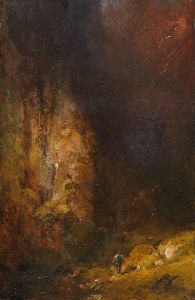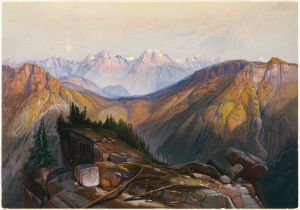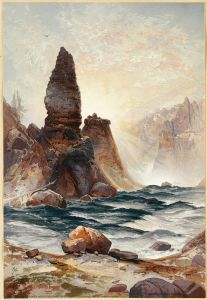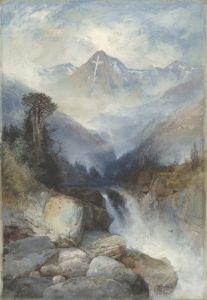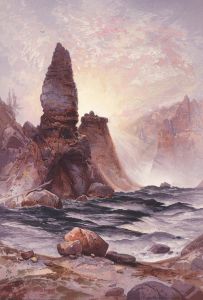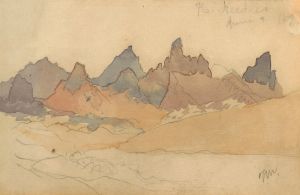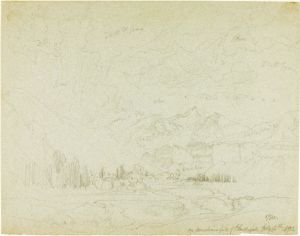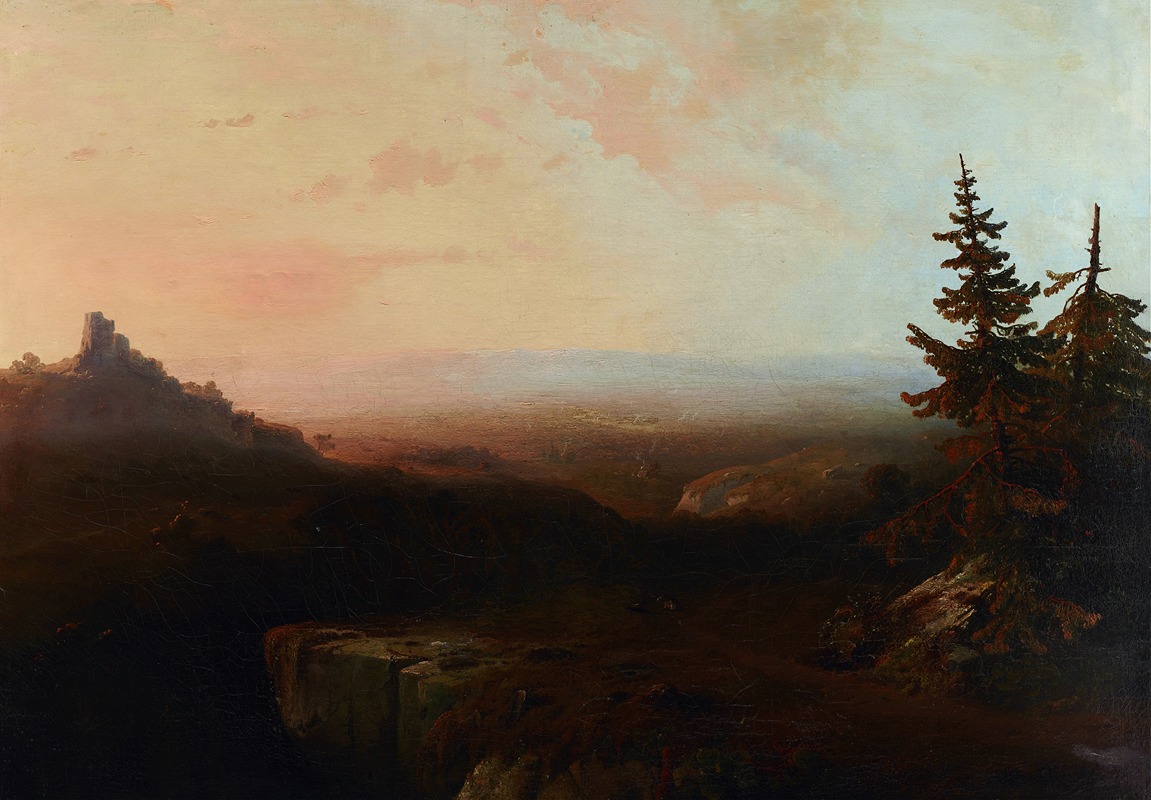
Mountain Scene
A hand-painted replica of Thomas Moran’s masterpiece Mountain Scene, meticulously crafted by professional artists to capture the true essence of the original. Each piece is created with museum-quality canvas and rare mineral pigments, carefully painted by experienced artists with delicate brushstrokes and rich, layered colors to perfectly recreate the texture of the original artwork. Unlike machine-printed reproductions, this hand-painted version brings the painting to life, infused with the artist’s emotions and skill in every stroke. Whether for personal collection or home decoration, it instantly elevates the artistic atmosphere of any space.
Thomas Moran was an American painter and printmaker of the Hudson River School in New York whose work often featured the rugged landscapes of the American West. He is best known for his depictions of the Rocky Mountains, the Grand Canyon, and Yellowstone, which played a significant role in the establishment of the National Park system in the United States. One of his notable works is "Mountain Scene," which exemplifies his skill in capturing the grandeur and beauty of the American wilderness.
"Mountain Scene" by Thomas Moran is a landscape painting that showcases Moran's mastery in portraying the sublime and picturesque qualities of mountainous terrains. Although specific details about the creation date or the exact location depicted in "Mountain Scene" are not widely documented, Moran's works from the late 19th century often reflect his travels and explorations in the American West. His paintings are characterized by dramatic compositions, vibrant colors, and meticulous attention to detail, all of which are evident in "Mountain Scene."
Moran's artistic style was heavily influenced by the Romantic movement, which emphasized emotion and individualism, as well as the awe-inspiring power of nature. This influence is apparent in "Mountain Scene," where Moran uses light and shadow to create a sense of depth and majesty. The painting likely features towering peaks, expansive skies, and possibly a serene body of water, elements commonly found in Moran's landscapes. His use of color is particularly noteworthy; he often employed a palette that included rich blues, purples, and greens to convey the natural beauty and atmospheric conditions of the scene.
Thomas Moran's work, including "Mountain Scene," played a crucial role in shaping public perception of the American West during a time of rapid expansion and exploration. His paintings were instrumental in promoting the idea of preserving these natural landscapes, contributing to the establishment of Yellowstone as the first National Park in 1872. Moran's ability to capture the essence of these landscapes helped to inspire a sense of wonder and appreciation for the natural world, influencing both art and environmental conservation.
In addition to his artistic contributions, Moran was also an accomplished printmaker and illustrator. His works were widely reproduced in publications, further extending their reach and impact. "Mountain Scene," like many of his other paintings, would have been part of this broader dissemination of his vision of the American wilderness.
Thomas Moran's legacy as a landscape painter is enduring, and his works continue to be celebrated for their beauty and historical significance. "Mountain Scene" is a testament to his skill and passion for capturing the majesty of the natural world, reflecting both the artistic and cultural values of his time. Through his art, Moran not only documented the landscapes of the American West but also contributed to the broader movement of environmental preservation and appreciation.





